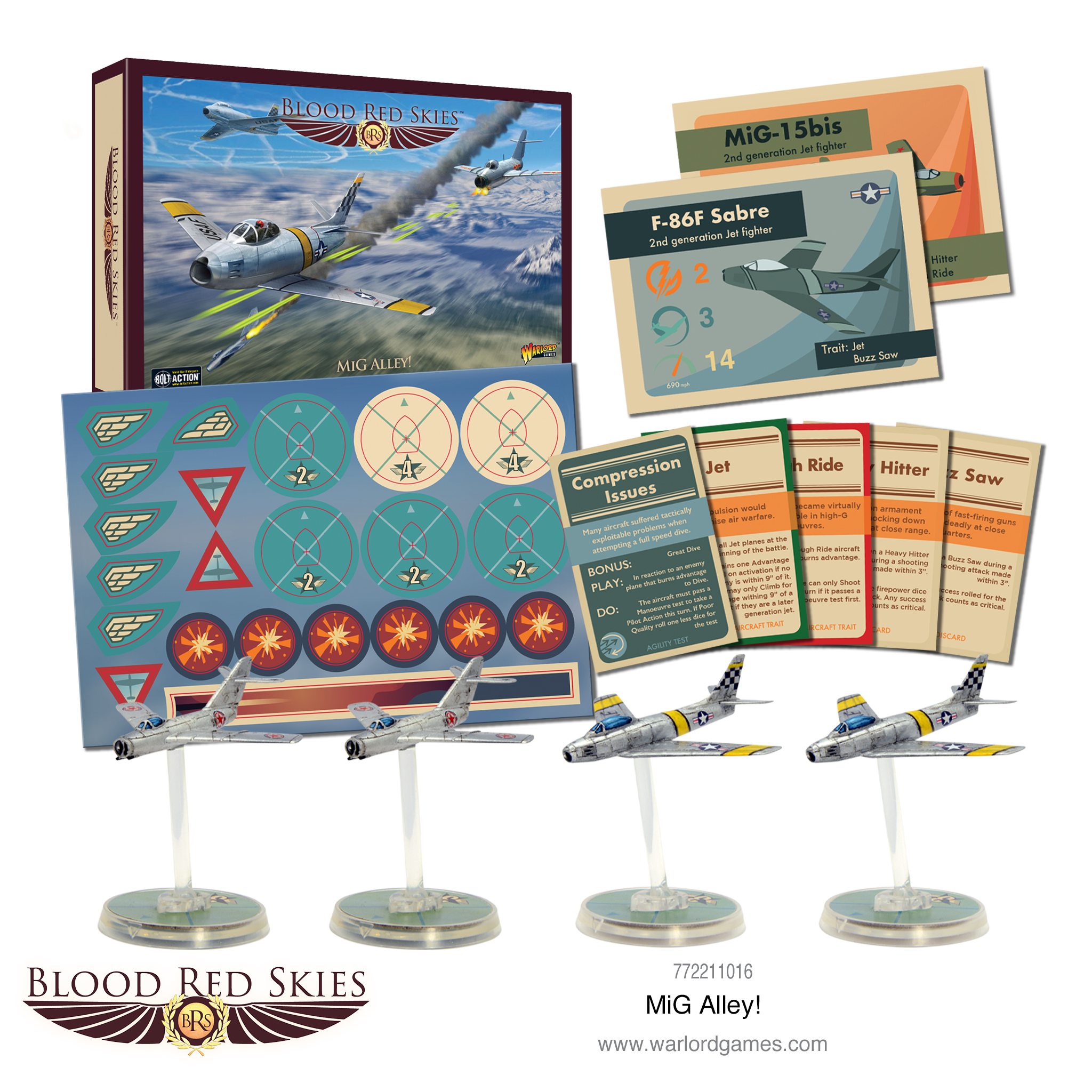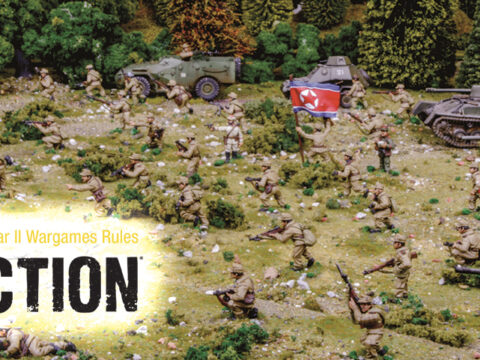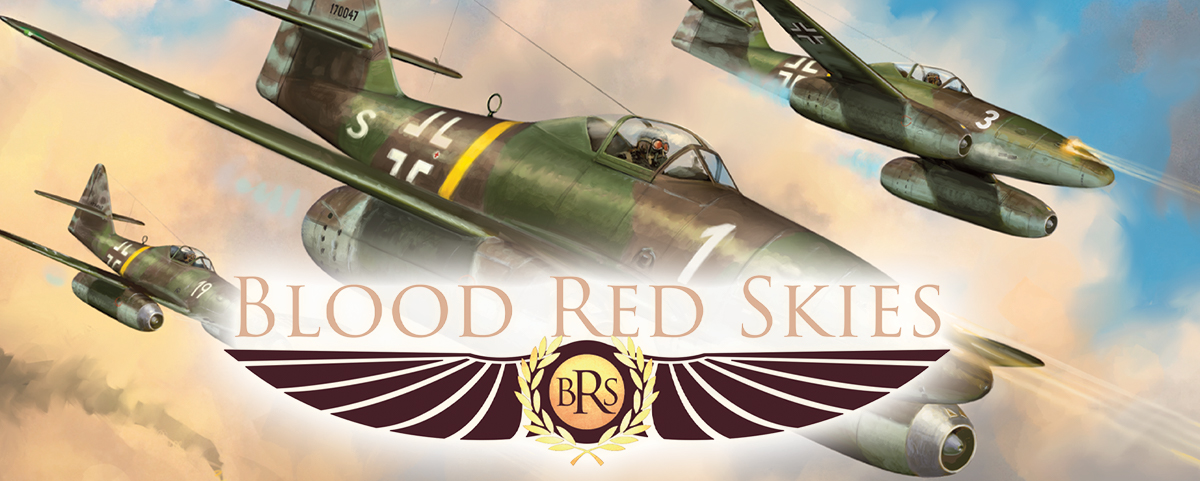
The game of Blood Red Skies is primarily concerned with the dogfighting of relatively sluggish prop-driven aircraft of World War Two. However, in the latter stages of the war the World’s first operation jet-powered fighter aircraft entered the fray, the Messerschmitt Me-262. Though this was far too late to improve the fortunes of the beleaguered Luftwaffe, it did set the precedent for future jet-powered aircraft…
Messerschmitt Me 262
The Messerschmitt Me 262 was the first operational jet-powered fighter aircraft in the world. Though design work began well before the commencement of World War II, problems with development – from the engines to interference from the highest command levels mean that the aircraft did not reach operational status until mid-1944, too late to make the required impact. The Me 262 was more heavily armed than and outperformed every Allied aircraft in terms of speed. It served in a number of roles such as light-bomber, reconnaissance and experimental night fighter. It earned nicknames dependant on its role, dubbed Schwalbe (German for swallow) in fighter versions, or Sturmvogel (German for storm bird) in fighter-bomber versions.
Though war records are sketchy pilots of the Me 262 claimed more than 542 Allied aircraft downed. Its phenomenal speed made it an extremely difficult target to intercept, however at lower speeds the 262 suffered from diminished performance due to the limitations of thrust provided by the early jet engine. Allied pilots soon learned to take advantage of this trait by attacking the aircraft at its most vulnerable during take-off and landing. Whilst airborne, Me 262 pilots were relatively safe from Allied aircraft provided they did not get drawn into low-speed manoeuvring contests.
In targeting enemy bombers, new tactics needed to be developed. Head-on attacks would not work, as the closing speed did not pair well with the rate of fire of the mounted Mk 108 cannons. When engaging bombers, Me 262 pilots developed a ‘broadside’ attack approach.
These new tactics can be reflected in Blood Red Skies gameplay. Using the Jet Aircraft trait (and providing no enemy aircraft are within 9″), a ME 262 immediately gains an Advantage level on activation. Combined with a high speed, this gives jet aircraft the kind of tactical flexibility that prop-driven pilots could only dream of. This outstanding mobility allows jet pilots to keep their distance, using their free advantage to either dive or manoeuvre. A pair of jets can use a series of long, scissoring passes to disrupt enemy formations and pick off unfortunate aircraft.
The Jet Age
The effect of the 262 on the outcome of the war was compromised by its late entry. By 1944, German armament production had shifted to more easily producible, and cheaper aircraft. Only a small number of Me 262s saw service, with reportedly only a maximum of 200 operating at any one time. Nevertheless, the aircraft influenced post-war military jet development, captured examples being extensively tested by the post-war major powers.
The Korean War saw these labours come to fruition as pilots of the Soviet Union (secretly mind) clashed with US pilots as what came to be known as MiG Alley!
The MiG-15
Unlike the western allies, the Soviet Union did not have a domestic jet fighter program during the Second World War.
What it did have was a huge amount of the research and development completed by Nazi Germany, which was used to produce the MiG-9 – an unexceptional first-generation jet using reverse-engineered BMW jet engines.
Despite Stalin’s reservations, the Soviet Union acquired 25 Rolls Royce Nene jet engines, which when combined with the research on swept-wing aircraft obtained from the Germans, produced the MiG-15
Armed with a pair of 23mm cannons and a single 37mm cannon in the nose, it proved to be a fantastic interceptor, able to shred enemy aircraft with a blizzard of high explosive shells. An interesting quirk of this pairing was that the two calibres had vastly different velocities, providing the unnerving experience of the faster 23mm shells passing over an aircraft, while the 37mm would pass under.
The MiG-15 was widely exported to Soviet client states and first saw service during the Korean War, where it completely outclassed the P-80 Shooting Stars and Gloster Meteors – eventually meeting its match when the F-86 Sabres joined the battle.
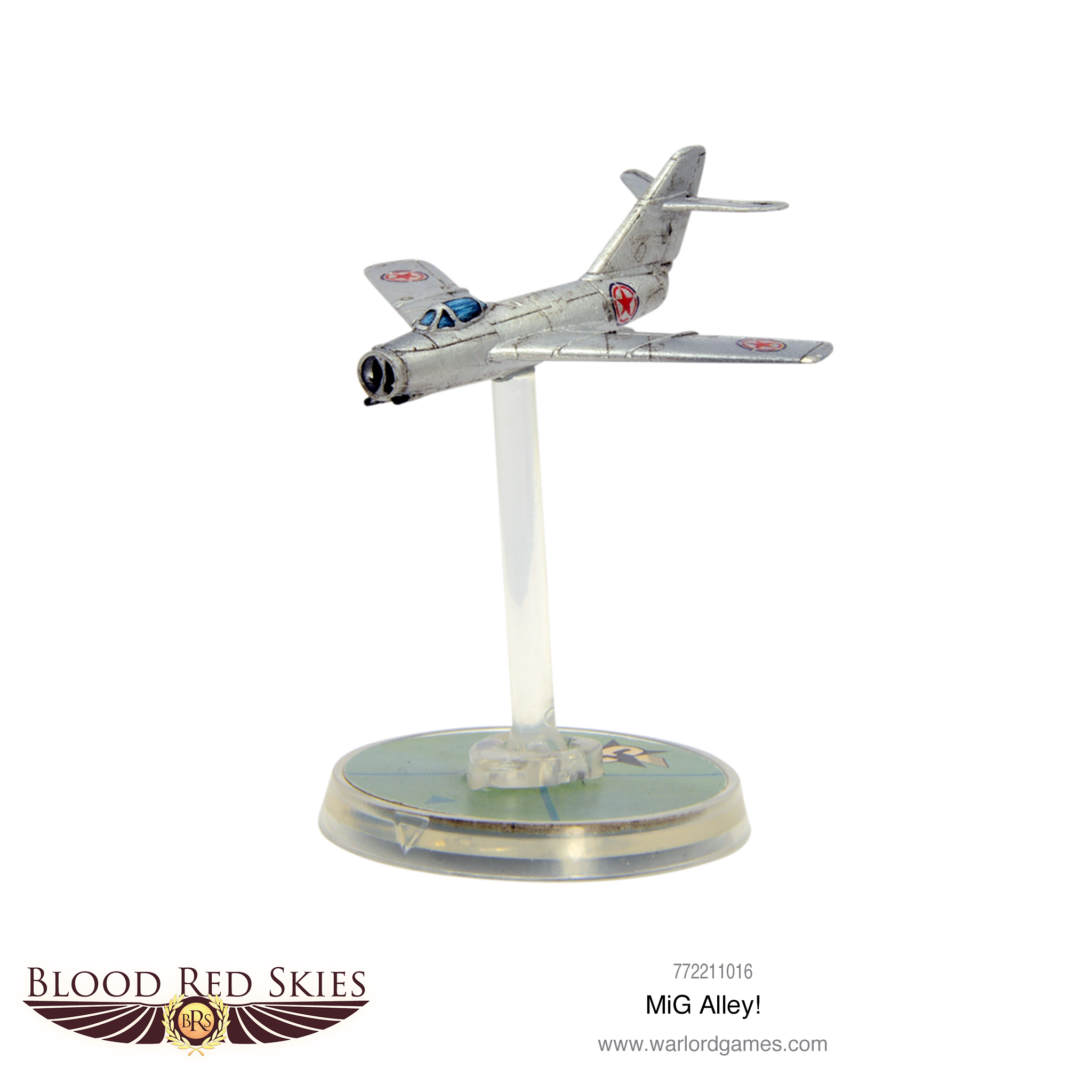
The F-86 Sabre
By 1951, the US domestic fighter jet program had already turned out some middling straight-wing designs – universally plagued with mechanical faults and reliability issues.
While the P-80 Shooting Star and F-84 Thunderjet were sufficient for ground attack work, they were unable to stand up to the lightning-fast MiG-15s.
The F-86 Sabre was the first aircraft to benefit from Operation Paperclip – a program employing German scientists to further develop the projects they’d worked on under Hitler’s regime. Along with jet engines and aircraft, it also continued the German’s ballistic missile program – resulting in the American space vehicles and nuclear missiles.
Early F-86s were still unable to match the MiG-15 pound-for-pound. They could potentially out-dive them, but they could still be outmanoeuvred. The upgraded F-model closed the gap and allowed the US to dominate the skies over the Korean battlefields.
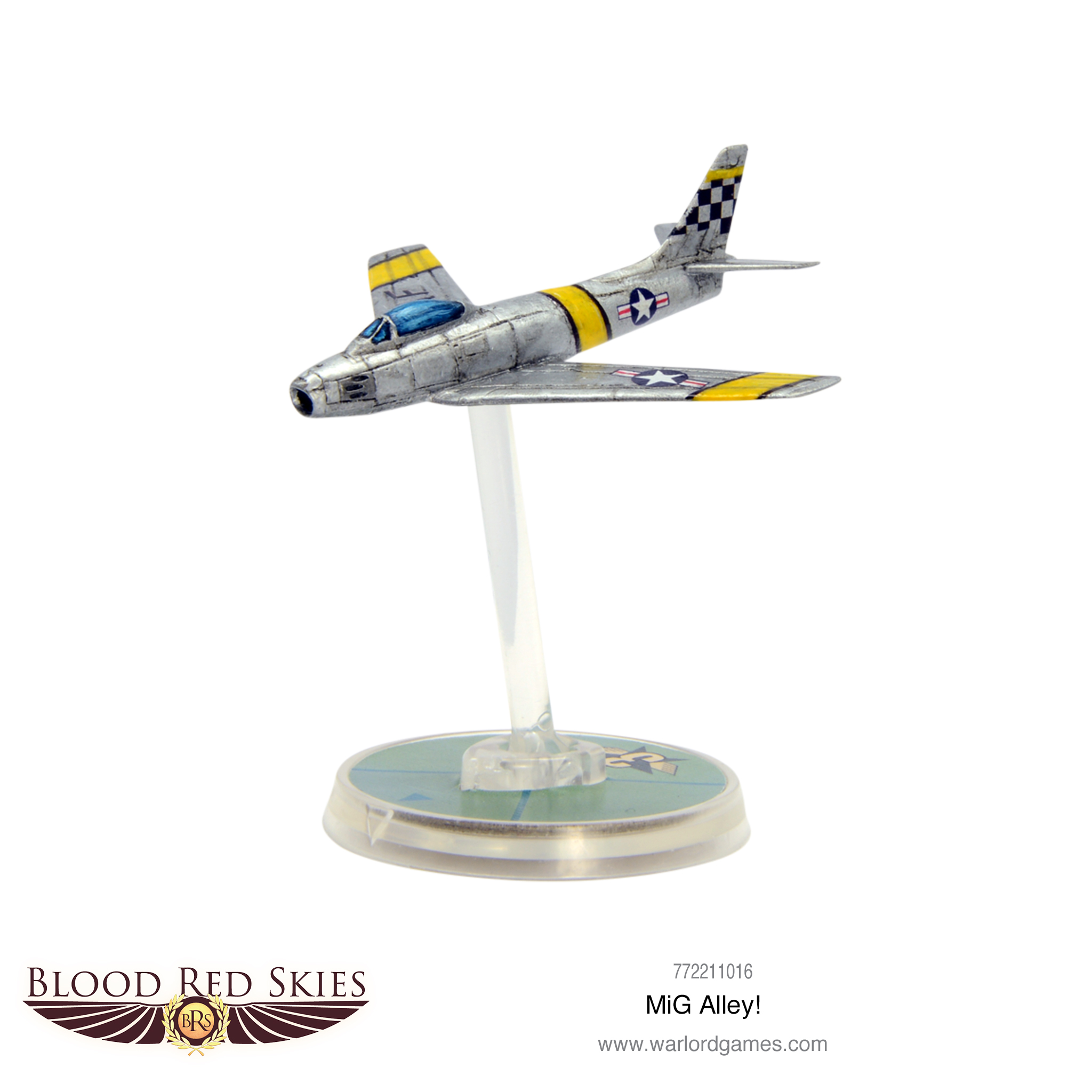
MiG Alley!
“MiG Alley” was the name given by the United Nations (UN) pilots to the northwestern portion of North Korea, where the Yalu River empties into the Yellow Sea. The Mig Alley set contains all the aircraft cards, pilot discs, traits doctrine and equipment cards you need to take your games of Blood Red Skies into the Jet Age!


